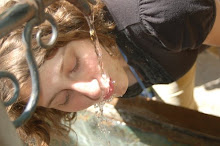In the article, “Exhuming Women’s Premarket Duties in the Care of the Dead,” Rundblad discusses how the preparation of bodies for burial used to be women’s work. This work was seen as an extension of the care work that women typically engage in, and these women earned the title “shrouding women.” As the economy grew and occupations became more specialized, the funeral industry developed, and men took over primary care of the dead. To justify their usurpation of what used to be a job only for women, men claimed that caring for the dead went against the “nature” of women. Advertisements put out by the funeral industry depicted men in active roles and women as props to be looked at. In this way, women were subordinated by the spread of these sex-stereotypical beliefs about the passive nature of women. When I stopped to consider this, a series of other papers we have read this semester came to mind. I realized that women’s subordination stems from one, core assumption about the difference between men and women’s bodies. Men’s bodies are active, and women’s bodies are passive objects that exist for the pleasure of men. This theme of active versus passive gendered bodies is readily apparent in discourse surrounding differences in reproduction, physical space, and beauty ideals.
When examining reproduction literature, the article, “The Egg and the Sperm: How Science Has Constructed a Romance Based on Stereotypical Male-Female Roles,” serves as a primary example. In this paper, Martin analyzes biological literature and finds that when the egg and sperm are discussed in the context of reproduction, the sperm is cast as the active “swimmer” who forges ahead and penetrates the egg. The egg, on the other hand, is painted as being very passive during this whole process. Recent evidence, however, shows that the egg is indeed an active participant in reproduction by trapping the sperm with adhesive molecules. Despite this new evidence, the old account of the active sperm and the passive egg still persists. Even during childbirth, a very active, physically draining activity, women often act passively by being polite and deferring their own needs as to not imposition doctors or their husbands. When they do actively make demands, Martin finds, they often feel guilty about their behavior later. This shows that women have internalized beliefs that they should be passive, even in physically demanding tasks like childbirth.
Likewise, the active versus passive nature of gendered bodies is apparent in literature about physical space. In, “Becoming a Gendered Body: Practices of Preschools,” Martin finds that boys are not discouraged from having active bodies that take up space, but that girls bodies are much more regulated. Girls were often told to raise their hands before speaking and passively wait for their turn to be called on. Play space is also confined for girls as they take up about 1/10th of the physical space that boys do on the playground. In addition to this, Thorne also finds that boys are much more likely to encroach on girl’s play than vice versa. This reinforces the notion of boys having active bodies that not only physically take up more space, but that can also encroach on the space of others.
If women are merely passive objects that exist for the pleasure of men, it makes sense that beauty norms are especially poignant for women. Weitz discusses how women both accommodate and resist oppression through their hair style choice. By choosing a style that accommodates traditional ideals of feminine beauty, women accommodate their oppression but also gain power as they are treated better than the women who choose to resist traditional hair ideals of feminine beauty. This shows how important looks are for women, and how they negotiate their power through their appearance rather than through their competence. Glen also emphasizes the importance of beauty ideals for women. In, “Yearning for Lightness: Transnational Circuits in the Marketing and Consumption of Skin lighteners,” she finds that women go to extreme, potentially dangerous lengths to lighten the color of their skin in order to come closer to the ideal of feminine beauty. Similarly, the ideal female body is not only beautiful, but also young. This means that aging women face higher pressure to resist the aging process through dieting or getting their gray hair dyed. These articles show that women have internalized their ascribed role as passive objects for the enjoyment of men.
This review of the class literature supports my assertion that the oppression of women is fueled by an assumption about the difference between gendered bodies. Men’s bodies are active, and women’s bodies are passive objects that exist for the pleasure of men. This assumption is internalized by women and is reflected in their reproductive processes, the physical space they demand, the beauty work they engage in, and in the strategies employed to resist aging. Women who resist the role of passive objects face negative implications. In her work on aging, Clarke finds that women who do shed the burden of beauty ideology resign themselves to exclusion, invisibility, and social devaluation. Internalizing this oppressive assumption about gendered bodies causes inner conflict as well. This is reflected in women’s eating disorders and in the drastic measures they take to alter their bodies through cosmetic surgery. In order to alleviate these complex social problems, women must reclaim their active bodies.
Subscribe to:
Post Comments (Atom)

No comments:
Post a Comment